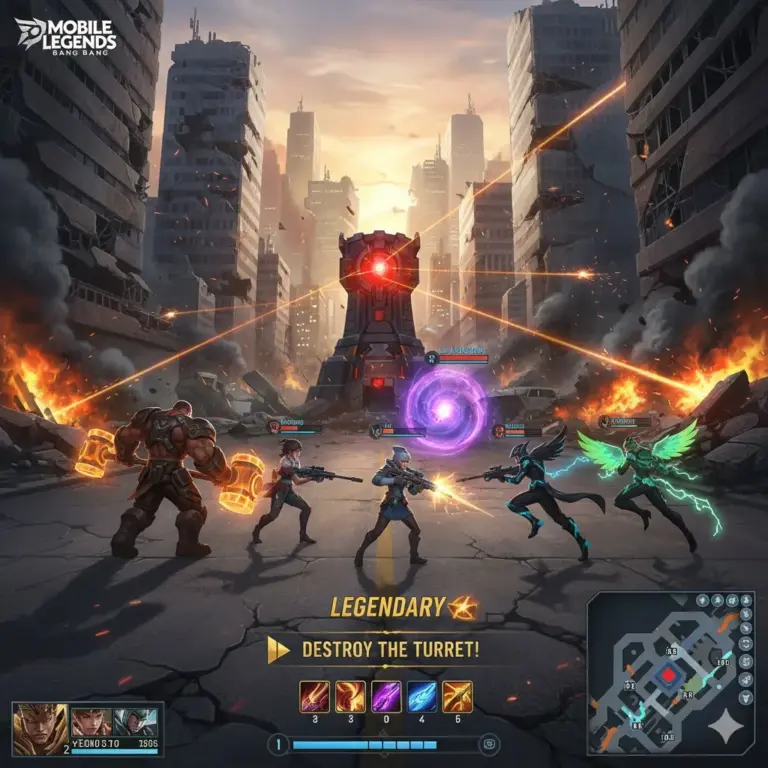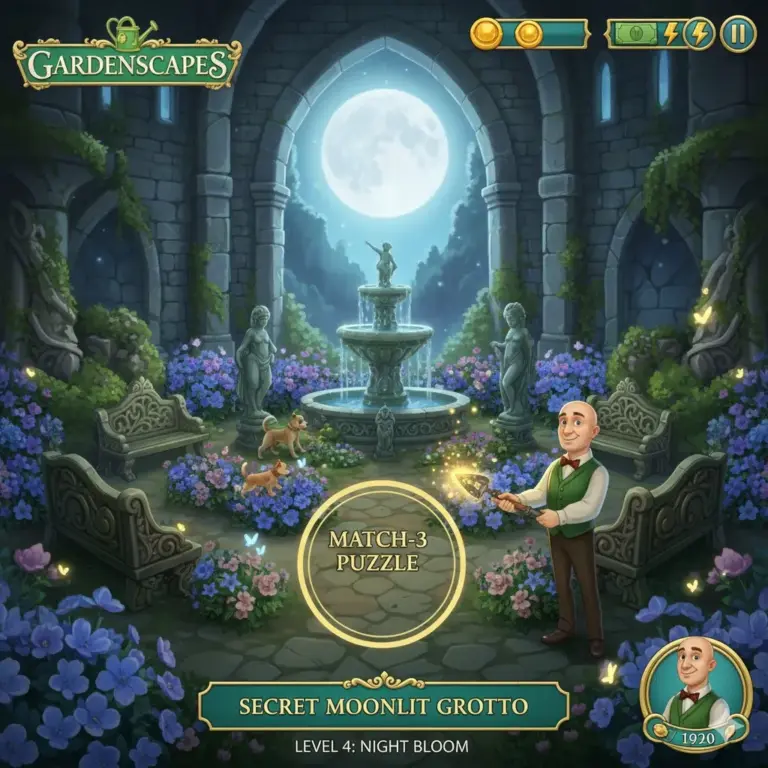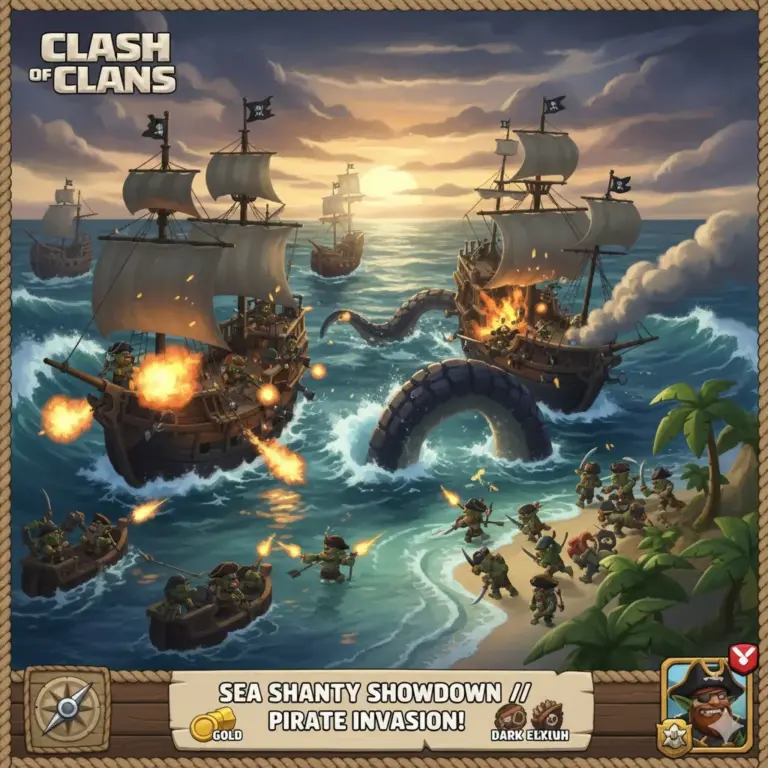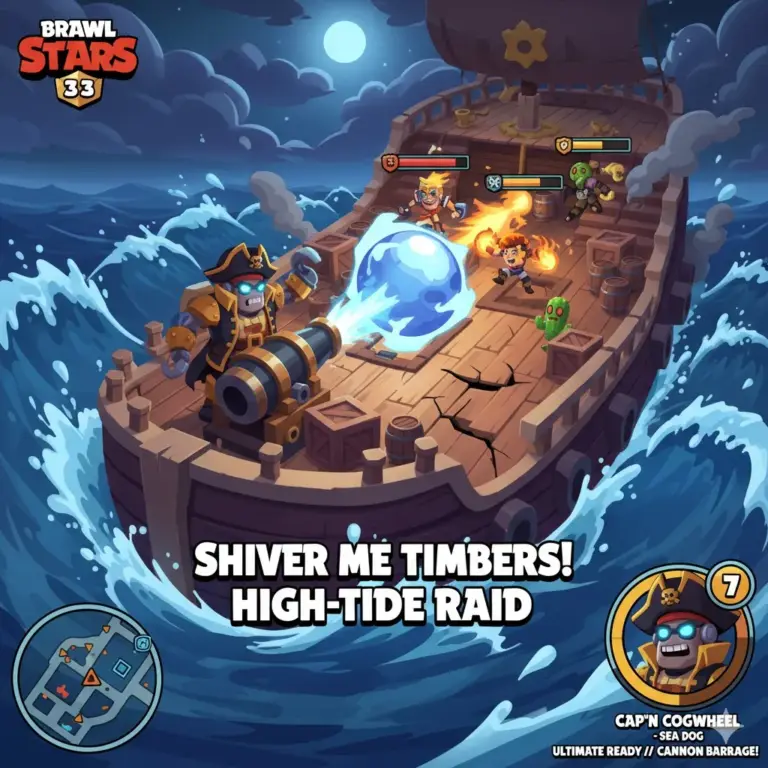In the vast, hyper-competitive ocean of mobile gaming, the Battle Royale genre is a battlefield of titans. Titles like PUBG Mobile and Call of Duty: Mobile have long dominated headlines with their realistic graphics and faithful adaptations of their PC counterparts. But standing apart from them, and in many regions, casting a far larger shadow, is Garena Free Fire.
As of 2025, Free Fire isn’t just a game; it’s a global cultural phenomenon. It has shattered records with billions of downloads, boasting a staggering daily active user (DAU) count that often exceeds 100 million players. It is the undisputed king of mobile gaming in major markets like Brazil, India, and Southeast Asia.
Its success is built on a simple, brilliant premise: accessibility. While its competitors were pushing the limits of mobile hardware, Garena built a game that could run on anything.
But is Free Fire’s dominance solely due to its accessibility, or is it a “lite” game that sacrifices depth for a mass audience? More importantly, in a world of F2P gaming, how does it navigate the treacherous waters of monetization? This in-depth 2025 review will explore the core gameplay, the unique “hero shooter” meta, and the massive “pay-to-win” controversy that defines Garena Free Fire and its HD counterpart, Free Fire MAX.

What is Garena Free Fire? The 10-Minute Battle Royale
At its core, Free Fire is a fast-paced, third-person shooter and a streamlined Battle Royale. The formula is familiar: you drop from a plane onto a remote island, scavenge for weapons, gear, and medical supplies, and fight to be the last person (or team) standing as a deadly safe zone shrinks around you.
The key difference is the scale and speed. Instead of 100 players in a 30-minute marathon, Free Fire pits 50 players against each other in a frantic, 10-15 minute sprint. This “fast food” approach to the genre is its first stroke of genius. It’s the perfect format for a mobile-first audience—playable on a bus ride, during a lunch break, or in short bursts at home.
The maps (like the classic Bermuda, the desert-themed Kalahari, or the alpine Purgatory) are smaller, more condensed, and designed to force confrontations almost immediately. There is no “quiet looting phase” in Free Fire; you are in the action from the moment your boots hit the ground.

Free Fire vs. Free Fire MAX: One Game, Two Experiences
For years, Free Fire’s main selling point was also its biggest graphical weakness. To run on low-end devices, it featured low-poly models, simple textures, and short draw distances.
To solve this, Garena introduced Free Fire MAX. This isn’t a sequel; it’s a graphical overhaul. MAX is the same game, with the same servers, the same accounts, and the same gameplay, but rebuilt with:
- Ultra HD resolutions and enhanced special effects.
- Greatly improved textures, lighting, and environments.
- Enhanced audio and more detailed animations.
Thanks to Garena’s “Firelink” technology, a player on a high-end iPhone 16 running Free Fire MAX can seamlessly team up with their friend on a five-year-old budget Android phone running classic Free Fire. It’s a brilliant strategy that unifies the player base while catering to both ends of the hardware spectrum.
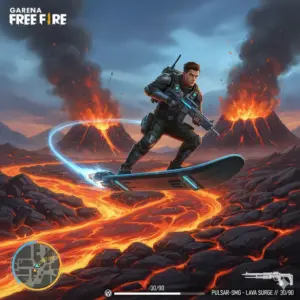
The Core Gameplay: Fast, Forgiving, and Tactical
The moment-to-moment gameplay of Free Fire is defined by its speed and its unique mechanics.
Simplified Looting
Looting is fast and efficient. The inventory system is streamlined. Gear like helmets and vests (Level 1-4) and backpacks are simple to understand. Attachments like muzzles, scopes, and magazines auto-equip to the best available weapon, minimizing the time you spend bogged down in menus. The game wants you fighting, not playing inventory tetris.
Forgiving Gunplay
The gunplay is intentionally not realistic. It’s designed for the inherent imprecision of a touch screen. The aim assist is notably “stickier” and more generous than in its competitors. This is a deliberate design choice to lower the skill floor, making the game more welcoming for new players. While this “auto-aim” feel can be a turn-off for hardcore FPS purists, it ensures that combat is more about positioning and strategy than pixel-perfect aiming.
The Gloo Wall: Free Fire’s “Building” Mechanic
This is arguably Free Fire’s most important and defining mechanic. The Gloo Wall is a consumable grenade that, when thrown, instantly deploys a curved ice-like barrier.
This is Free Fire’s answer to Fortnite’s building.
In an open field with no cover, the Gloo Wall is your cover. It’s an instant defensive tool to block gunfire, a strategic item to trap opponents, or a temporary barrier to use while healing. Mastering the art of the Gloo Wall—when to place it, how to place it quickly (“360 Gloo”), and how to fight around it—is one of the highest forms of skill expression in the game. It adds a tactical layer that is completely unique to Free Fire.
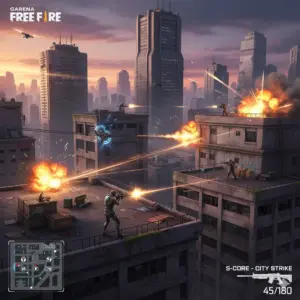
The “Real” Game: The Hero Shooter & Pay-to-Win Meta
Here is where Free Fire completely diverges from its Battle Royale rivals and where its greatest controversies lie.
Free Fire is not a pure BR; it is a Hero Shooter.
The Character System
The game features a massive roster of dozens of characters, each with a unique active or passive ability. For example:
- DJ Alok: Creates a healing and movement speed aura for the whole team.
- Chrono: Deploys a force field that blocks enemy damage and allows the user to shoot from within.
- K (KSHMR): A versatile character who can manipulate EP (Energy Points) for rapid self-healing or to support the team.
This system runs deep. A player’s loadout consists of one Active Skill (like Chrono’s shield) and up to three Passive Skills “slotted in” from other characters you own. This allows for a deep meta of “skill combos,” where players mix and match abilities to create a build that suits their playstyle (e.g., a “rusher” build with high movement speed and healing on kill, or a “sniper” build with damage bonuses at range).
The Pet System
As if characters weren’t enough, you also have a Pet. Each pet provides another small, unique passive bonus. Mr. Waggor, for example, will periodically generate a free Gloo Wall grenade when you run out. The Rockie pet reduces the cooldown of your Active Skill. This adds yet another layer to your strategic loadout.

The Pay-to-Win Controversy
This deep, engaging meta is also the source of Free Fire’s biggest problem: it is aggressively “pay-to-win” (P2W).
- Characters: When a new, powerful character (like Chrono on release) is introduced, they are often game-breakingly “meta.” They can be purchased immediately with “Diamonds” (real money). While F2P players can eventually grind to earn them with “Gold” (in-game currency), this takes weeks or months. For that entire period, paying players have a direct, undeniable competitive advantage.
- Weapon Skins: This is the most egregious P2W mechanic. In most games (PUBG, COD, Fortnite), weapon skins are purely cosmetic. In Free Fire, many “Legendary” or “Evo” weapon skins, obtained through “Luck Royale” (gacha/loot box) events, provide direct statistical buffs. A single skin might offer
+Damage,++Rate of Fire, and-Magazine Size. A player with a fully-upgraded Evo M4A1 literally has a better gun than a F2P player.
This isn’t “pay-for-convenience.” It’s a clear “pay-for-power” system.

Monetization: The “Fashown” & Gacha Engine
Outside of the P2W mechanics, Free Fire’s monetization is a masterclass in cosmetic sales and FOMO (Fear of Missing Out). The game is a vibrant, chaotic “fashown” (fashion show). The aesthetic is not military-realism; it’s loud, flashy, and wild. Players run around in angel wings, dinosaur costumes, streetwear, and anime-inspired outfits.
These items are sold through:
- Direct Purchase: Simple store bundles.
- Booyah Pass: The monthly battle pass, offering a mix of exclusive skins, currency, and characters.
- Luck Royale & Events: The gacha system. Most of the desirable, rare items (including the P2W weapon skins) are locked behind these time-limited “spins,” which exploit FOMO and addictive collection mechanics to drive enormous revenue.
2025 Verdict: Is Garena Free Fire Worth Playing?
Garena Free Fire is a game of stark contrasts.
On one hand, it is a brilliantly designed product. It solved the “accessibility” problem for a generation of mobile gamers. Its 10-minute match time is perfectly paced for mobile. Its core gameplay is fast, fun, and easy to pick up. The Gloo Wall and Character systems provide a surprisingly deep and unique tactical meta that its competitors lack.
On the other hand, it is one of the most unapologetically pay-to-win games on the planet. The fact that paying players can have statistically better guns and instant access to meta-defining characters is a deal-breaker for any player who values a level playing field.
Ultimately, Free Fire’s success proves that for its target audience, the fun, accessibility, and deep “hero shooter” meta far outweigh the concerns of its P2W model.
You should play Garena Free Fire if:
- You have a low-to-mid-range phone that struggles with other BR games.
- You want fast-paced, 10-minute matches, not 30-minute marathons.
- You love the “hero shooter” concept of abilities and skill combos.
- You enjoy deep cosmetic customization and a flashy “fashown” aesthetic.
You should AVOID Garena Free Fire if:
- You are a F2P purist who demands a perfectly level playing field.
- The concept of pay-to-win weapon stats is unacceptable to you.
- You are looking for realistic graphics and tactical, slow-burn gunplay.
- You are sensitive to gacha mechanics and FOMO-driven events.
Free Fire is the undisputed king of accessible mobile shooters, but it wears a crown bought and paid for with Diamonds.
Final Score:
- Gameplay: 4/5 (Fast, fun, and tactically unique with the Gloo Wall/Character meta)
- Graphics & Sound: 3/5 (Highly accessible, with MAX offering a modern HD option)
- Engagement & Longevity: 5/5 (A flawless machine of events, social hooks, and meta progression)
- Monetization: 1/5 (Aggressively and undeniably pay-to-win)
